What is Cryptocurrency?
Cryptocurrency is a type of digital currency, an exchange, a means of exchange, which is not controlled by a central authority, allows the transfer of value from person to person without the need for another authority, uses cryptographic transactions to perform financial transactions through online networks (internet).
What is the Difference Between Cryptocurrencies and Other Digital Currencies?
Most non-crypto digital currencies are operated and managed by a central authority. Examples of such digital currencies are electronic money enacted by Law No. 6493 in 2013, bank accounts, debit cards and credit cards. Account records in these systems are stored on the servers of the organization operating the system. For this reason, the security features required for digital money are provided by the information security infrastructure of the organization that operates the digital currency. Centralized digital currencies are centralized not only in terms of information systems but also in terms of administration, managed by an institution.
The most important feature that distinguishes cryptocurrencies from other digital currencies is that their IT infrastructures are not centralized. Account records are kept on hundreds, thousands, millions of different small servers running a registry software built on cryptology technology. Each of these servers is operated by different anonymous organizations or individuals. It is not possible to change, delete or transfer the account records in the system to other accounts without permission. With these features, they provide the security requirements that should be in a currency without an intermediary institution or person.
What is Digital Currency?
It is an exchange tool that is available in digital form on the Internet and is used only for transactions and payments in the electronic environment, and has all the features of traditional money except for its unique features such as transaction speed and ease of transaction. Digital currencies are a type of money that allows online payment on electronic media. The money in bank accounts is also digital money. You can pay bills, shop, and transfer money with digital currencies.
Cryptocurrencies such as Ethereum, Ripple, Litecoin are also a type of digital money. The most well-known and popular cryptocurrency is Bitcoin. Compared to regular digital currencies, Bitcoin uses Blockchain technology and is decentralized. For more information on Bitcoin, see What is Bitcoin? You can read our article.

Are Digital Currencies Safe?
Digital currency is much more secure than paper and coins. Digital currency uses computer files instead of paper and uses cryptographic passwords to protect records. The use of paper money carried in wallets does not have any security, but the use of digital currencies is done with electronic passwords determined by the user. It is more difficult to imitate digital currencies than paper money, digital currencies are not a physical object like paper money whose details are known to everyone.
What are the Differences Between Digital Currency and Cryptocurrency?
Digital currencies are issued and controlled by an authority. Therefore, digital currencies have a centralized structure. There is no authority behind cryptocurrencies and cryptocurrencies are developed in a decentralized structure.
Transactions with digital currencies can be made by users with their real identities. Therefore, transactions are not confidential. When making transactions with cryptocurrencies, personal information is needed and this information is shared with any authority. Therefore, transactions made with crypto money are confidential.
Although digital currencies are regulated by legal regulations by many countries, cryptocurrencies are limited by a few countries as they are quite new assets.
While digital currency transactions are quite weak against cyber attacks and open to manipulations compared to cryptocurrencies, blockchain-based cryptocurrencies are much stronger and safer against these attacks. when crypto collapse, when crypto collapse, crypto bubble bursts, Or crypto rally,up or down movements, technical and fundamental analysis,chart movements,Bitcoin comments, Bitcoin TL , Bitcoin how much, Bitcoin dollar, Bitcoin what, Bitcoin comments , How much is Bitcoin today, How to buy Bitcoin, Bitcoin analysis, Bitcoin live, how to buy Bitcoin, Bitcoin predictions, what will be Bitcoin, what happens to Bitcoin, when Bitcoin rises, Tags: crypto money, what is bnb, what is bnb coin analysis, what is bitcoin ,btc analysis,btc latest status,btc comment,eth comment,eth analysis,crypto expert,zen coin,zen coin comment,zen coin chart,zen coin analysis,zen,zen coin,zen analysis,zen chart, zen comment, Altcoin, Cryptocurrency, Bitcoin, Current analysis, Current situation, Latest situation, Technical analysis, formation, will it rise or fall?, Current support resistance points, Current graph, what is bitcoin in my videos here, how to buy bitcoin, bitcoin and altcoin comments, technical analytics stock , altcoins bitcoin and altcoin buy and sell tactics, how to make money from cryptocurrencies, altcoin dailys which altcoin will rise, altcoin that will rise the most, when will the rise in altcoins begin, bitcoin analysis altcoin analysis, will bitcoin fall or rise, altcoins will rise, bitcoin technical analysis, altcoin technical analysis, will xrp drop, xrp rise, when altcoin rally, bitcoin monetization, altcoin monetization, how to buy bitcoin, how to sell bitcoin, how to sell altcoin, which exchange to buy bitcoin and altcoin xrp xlm ripple ,steller ,etherium, chainlink , eos ,dash ,bch ,Prices and Latest Developments HOW MUCH RISE? DID IT FALL? Bitcoin – BTC, Ethereum – ETH, Binance Coin – BNB, Chiliz – CHZ, Cardano – ADA, Ripple – XRP, TVK, BAKE, GRT, +Bitcoin+Crypto+Economy+Btc+altcoin+Blockchain+ethereum+ripple+BTC+ ETH+LTC+XRP+NEO+EOS+Link+atom+xtz+trx+tron+altcoin+why should I buy bitcoin+My Crypto World+What is Bitcoin+Bitcoin review+Cryptocurrency+Digital currency+Bitcoin analysis+cryptocurrency+world analysis+ bull rally+altcoin bull+what is crypto+cryptocurrency+cryptocurrency exchange+cryptocurrency bitcoin+cryptocurrency chart+what is bitcoin+bitcoin mining- #bitcoin #etherium #ont ,#qtum,#reef #island, #investment# ,economy ,#altcoin ,#altcoin bull #ripple ,#xrp, #cryptocurrency #stock market SUPER, ALICE, FLOW, BTCST, NEO, 1INCH, BTT, WIN, TRX, HOT and altcoins! Which Crypto Coins Do I Follow? ,Bitcoin analysis – Bitcoin technical analysis – altcoin analysis – btc – what is it – buy sell – will it rise? will it fall? win – buy – how to buy – purchase – price – comment – comment what’s the latest status? What will happen now? What are btc comments support and resistances? Has btc bear season started? bull season continues? crypto – bitcoin, cryptocurrency 2021, crypto, crypto, cryptocurrencies, crypto crash, crypto crash, crypto crash, crypto crash, bitcoin crash, crypto Bitcoin BTC , Altcoin and Cryptocurrencies
What is Blockchain?
The concept of blockchain is derived from the words block and chain to express a single chain in which individual transactions, which are described as blocks, are joined together similar to a chain and where all transactions (blocks) are recorded. Blockchain is a system where Bitcoin and other crypto money transactions are realized and these transactions are recorded, allowing the transfer of value between computers. The founder of blockchain technology is a person thought to be the alias Satoshi Nakamato. Nakamoto published in 2008
In his article called Bitcoin:peer-to-peer electronic cash system, he explained the structure of Bitcoin (What is Bitcoin?) and its underlying Blockchain technology.
Blockchain Structure
Blockchain technology is decentralized and transparent. The information on the block can only be processed by the specified buyer and seller. The transactions made create blocks, for example, each of the information such as the name of the recipient and the amount sent to the recipient is a block. Blocks (transactions made) can be seen by everyone, but user information is confidential, thanks to this feature, everyone can control the transactions and confidentiality is provided.
Thanks to the ingenious nature of the blockchain, it is almost impossible to make changes to the blocks. Each block is connected to the previous and the next block, when it is desired to make a change in a block, since it will be incompatible with the previous and next block, this change is immediately noticeable. The probability of theft risk in blockchain technology is much lower than the probability of a meteor hitting the earth.
How Blockchain Works
Blockchain does not have a standard operating model. Blockchain network can work in different ways depending on the way it is developed and its purpose. In the most basic sense, a transaction is performed on the designed network. A block is formed as a result of each transaction. As a result of the confirmation of many computers on the network, the transaction (block) is added to the blockchain and each transaction is cryptographically linked to each other.
Blockchain working structure
Blockchain is decentralized, the owner of the system is not a single person or institution, all users are the administrators of the system. Thanks to its decentralized structure, all transactions are carried out directly from person to person, without intermediaries, that is, without a third person. Blockchain is made up of blocks. All transactions made by users are recorded on the blockchain network with mathematical calculations, and a new block is created with each new transaction. Users’ names and surnames appear as numeric identification numbers, this feature provides anonymity during transactions. It is almost impossible to make changes in this structure where all transactions and information are recorded. All blocks are connected to each other, when a change is desired to be made in a block, it is immediately noticed because it will be incompatible with other blocks. With this feature, we can say that the blockchain has key-lock compatibility.

Keys and authentication in Blockchain,
Blockchain uses asymmetric encryption method from asymmetric and symmetric encryption methods. In the asymmetric encryption method, encryption and decryption are done with two separate keys that are complementary to each other. If we compare these keys, which we call the public key and the private key, the username acts as the public key and the password acts as the private key. Username and actions are visible to everyone, and only the user can see the password. This feature ensures that blockchain technology is transparent.
As the name suggests, the symmetric encryption method is the encryption method in which decryption and encryption processes are performed with a single key. A digital signature is formed with the combination of private key and public key. A Digital Signature is a cryptographic confirmation mechanism that proves that the user has consented to the transaction through a Bitcoin wallet accessed with a private key. The digital signature guarantees that the transmitted information is error-free and that the information is transmitted by verifying the identity of the parties. To learn more about digital signature, see What is a digital signature? You can visit our article.
What is Bitcoin?
Bitcoin can be defined as a kind of money or value that does not have any authority behind it, works in a decentralized structure, can be transferred directly from person to person without the need for the approval of third parties, and whose record is kept in an electronic / digital environment. It is also called crypto money because it is provided with cryptology technology on the blockchain network to be securely stored and transferred in a decentralized and dispersed structure.
The most important feature of Bitcoin is that it can be transferred from person to person without intermediaries. In this respect, it adorns physical values such as cash or gold. Indeed, other types of electronic/digital money require a central intermediary; For example, money in a bank account can only be stored through a bank or transferred to another person.
In such systems, central intermediaries must be reliable. If the intermediary is not reliable, the security of the stored or sent money cannot be mentioned. Bitcoin or cryptocurrencies have started a new era in the financial system by eliminating the need for an intermediary that should be secure.
Brief History of Bitcoin
The working theory of Bitcoin was first put forward on a cryptology discussion list by Satoshi Nakamato on October 31, 2008 in the article Bitcoin: Peer-to-Peer Electronic Cash System. Later, the software, which was developed by Satoshi Nakamato, was published with open source code and was opened to those who want to be included in the system by examining or running the code.
The Bitcoin network was launched on January 3, 2009. The first Bitcoin transfer was between Satoshi Nakamoto and Hal Finney, who helped develop Bitcoin. Later, it was claimed that Hal Finney was actually Satoshi Nakamoto. The first Bitcoin purchase was on May 22, 2010.
It happened when a user named Laszlo Hanyecz bought a pizza for 10,000 Bitcoins. Every year, 22 May is celebrated as pizza day.
The Bitcoin blockchain was first operated on January 3, 2009, through a server in Helsinki, Finland. On January 12, 2009, the first Bitcoin transfer took place between Satoshi Nakamoto and Hal Finney. The first known Bitcoin exchange was made on May 22, 2010, on the BitcoinTalk forum, with a user named Laszlo Hanyecz paying 10,000 Bitcoin for 2 pizzas. May 22 is celebrated as “Bitcoin Pizza Day” every year.
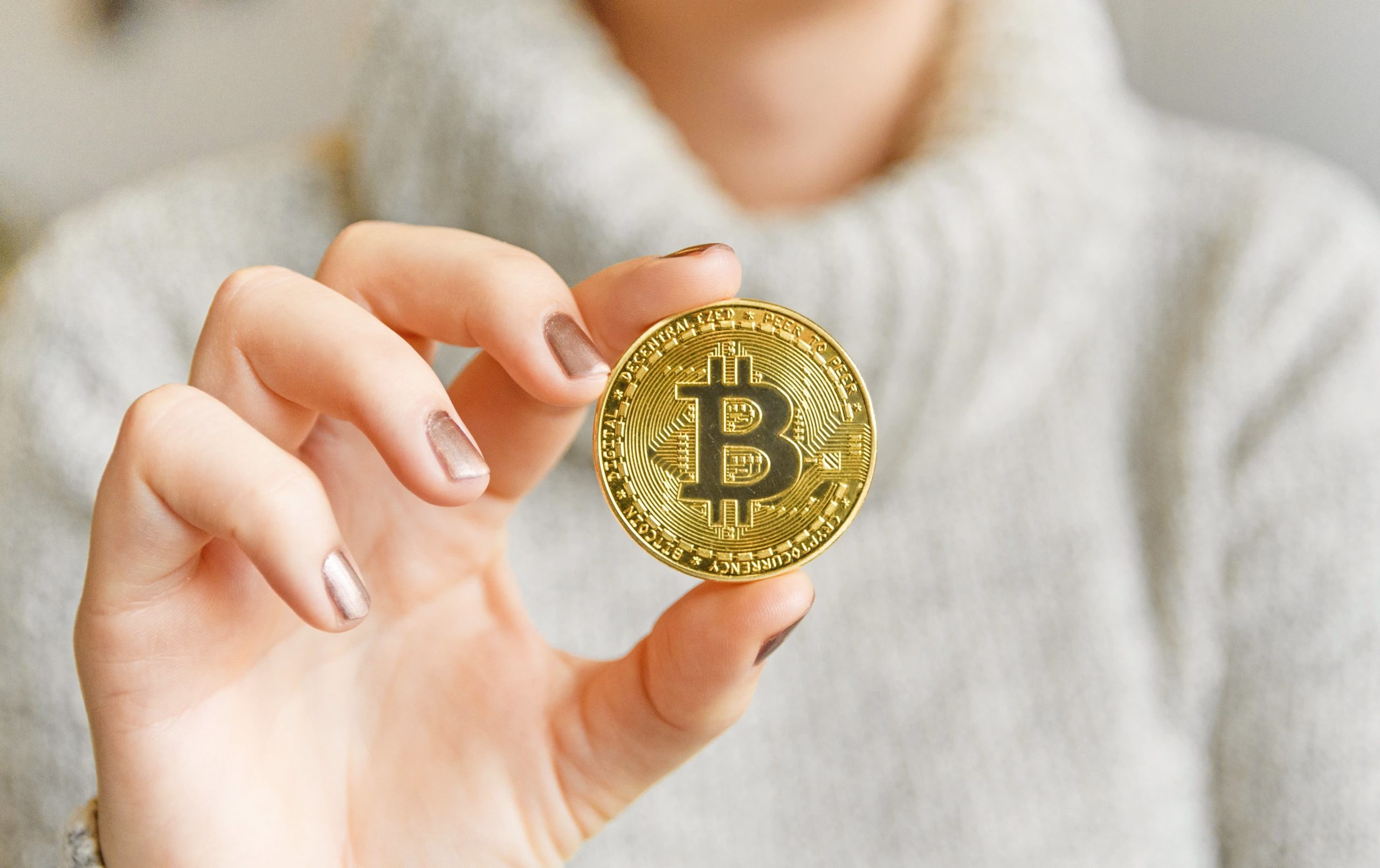
Structure of Bitcoin
Bitcoin works with distributed ledger technology (DLT) designed in a decentralized structure. This system, as the name suggests, can be compared to a ledger stored in dispersed computer systems. Bitcoin balances and transfers at Bitcoin addresses are stored in this ledger kept on the blockchain. Keeping the data scattered in many copies prevents the data from being changed illegally and also ensures that the data is always accessible.
The method that allows the contents of the data to be stored correctly without alteration is to keep the data in a chain connected to each other. Thanks to this method, if a change is made to one of the blocks in the past, it and all subsequent blocks lose their validity, that is, the chain is broken. In this way, the system protects itself against illegal changes. What makes Bitcoin so special is the trust given by its decentralized structure and working with blockchain technology.
What Makes Bitcoin Valuable?
As with every financial value, it is the supply-demand balance that makes Bitcoin valuable. Since there is no authority that markets Bitcoin and tries to protect its value, its value is completely shaped by the supply-demand balance in free market conditions. In this respect, it is most similar to commodity assets such as gold, silver, precious stones or precious metals. For this reason, it can also be called a digital commodity/digital asset.
The supply of Bitcoin is limited within the framework of various rules set in its software. When the Bitcoin network started operating on January 3, 2009, it was started without any Bitcoin in circulation, and a 50 bitcoin reward was randomly distributed every 10 minutes to one of the people who joined the system and operated the blockchain. Since the only way to create Bitcoin is to run the software that will operate the blockchain, this process is also called Bitcoin mining. In this way, both the operation of the system is guaranteed by creating a profit for the people who will operate the system, and the fair distribution of Bitcoin assets is ensured.
The distributed Bitcoin rewards, hence the amount of Bitcoin entering the system, are halved every 210,000 blocks mined (about every 4 years). So far (October 2020), a total of 18.3 million Bitcoins have been circulated, and the prize amount has decreased to 6.25 Bitcoins in May 2020. This means that annual Bitcoin inflation is about 7%. in the amount of the prize
The halving will continue by repeating every 4 years and when 21 million Bitcoins are reached in 2140, new Bitcoin entry into the system, that is, the supply will stop completely. When comparing its supply to gold, it will be seen that Bitcoin’s supply is much more constrained and does not increase with price, so there is no supply increase feedback that will negatively affect price increases as it is below.

Of course, for a financial asset to be valuable, it is not sufficient to have limited supply. At the same time, there must be demand, so there must be areas of use that will create demand.
Bitcoin’s most volumetric
High usage areas include:
• National/International Money Transfers
• Payment Transactions
• Investment/Value Custody Tool
Reference Currency for the Crypto Money World
Although the popularity of Bitcoin has increased considerably in recent years, very few people in the world still know about the real benefits and values of Bitcoin and cryptocurrencies.
Who Is Bitcoin’s Developer?
Bitcoin: Peer-to-Peer Electronic Cash System article, which describes the Bitcoin working system, was first sent to the cryptography mailing list operated on metzdowd.com on October 31, 2008 with an article titled “Bitcoin P2P e-cash paper” using the name is Satoshi Nakamato. Satoshi Nakamato mentions in email that he has been working on an electronic money system that works without a person-to-person intermediary for a while and links to http://www.bitcoin.org/bitcoin.pdf where the article was published.
Subsequently, Satoshi Nakamato publicly published the codes he had developed until that day on the sourgeforce.net site and announced it in a text on the metzdowd.com cryptography mailing list.
The first Bitcoin transaction was created on January 3, 2009, by creating a Bitcoin block and published via a server in Helsinki, Finland. On January 12, 2009, the first Bitcoin transfer took place between Satoshi Nakamoto and Hal Finney. The first known Bitcoin exchange was made on May 22, 2010, on the BitcoinTalk forum, with a user named Laszlo Hanyecz paying 10,000 Bitcoin for 2 pizzas. May 22nd is celebrated annually as “Bitcoin Pizza Day”.
Satoshi Nakamato continued to develop Bitcoin as open source until 2010, with volunteer software developers from all over the world. Satoshi’s last e-mail on April 23, 2011 was “I’m working on new things”.

Who really is Satoshi Nakamato, the inventor of Bitcoin and cryptocurrency technology?
It is still unknown who used the name Satoshi Nakamato, and whether it was used by a group or an individual. In the studies to reveal the identity of Satoshi Nakamoto, the claims that the name Satoshi Nakamoto was created by combining the first syllables of Samsung, Toshiba, Nakamichi and Motorola and that it was a Japanese based on the syllables of his name were brought to the agenda. Based on these allegations, it was thought that Satoshi might be his colleague, Japanese-born Hal Finney, but Finney denied the allegations. Another claim was that Satoshi was thought to be Japanese-born Dorian Nakamoto, who lived in the same city as Hal Finney and lived in very close quarters, while Dorian stated that he was uncomfortable with these allegations.
Another debate about who Satoshi Nakamoto is is the claim that Australian businessman Craig Wright is the developer of Bitcoin. Wright made the claim that he was Satoshi in 2016. The crypto community wanted Wright to sign the genesis block excavated by Satoshi, but Wright was unable to sign the genesis block.
Wright insisted that he was Satoshi Nakamoto and said that he had a large number of Bitcoins and that he could reset Bitcoin. Although Craig Wright claims to be the inventor of Bitcoin, he could not prove his claim to the crypto community, and his claims were not appreciated among Bitcoin users.
Although there are many claims about who Satoshi Nakamoto is, the truth is still a mystery. In fact, Satoshi hid his true identity, allowing the focus to be on the invention itself rather than the person behind it. With the launch of Bitcoin and blockchain technology, Satoshi Nakamoto revolutionized the modern finance and banking industry.
When Was Bitcoin Developed?
The first known studies on Bitcoin were carried out in 2008. Satoshi Nakamoto talked about Bitcoin in an article called Bitcoin:A Peer-to-Peer Electronic Cash System on metzdownd.com in October 2008. He released the Bitcoin software, taking the first steps of the Bitcoin network, and the first Bitcoin block was created on January 3, 2009. On January 9, 2009, the Bitcoin blockchain started to work and the edited version of the Bitcoin software was released. On January 12, 2009, the first Bitcoin transfer took place between Nakamoto and software developer Hal Finney. Hal Finney made history as the recipient of the first Bitcoin transfer.
Blockchain is a technology that works with all users sharing common data without a central management system, where all transactions related to Bitcoins are kept.
Although Bitcoin is also a cryptocurrency, it is a technology with blockchain and P2P (peer to peer-to-person) infrastructure. This technology, which started with the development of Satoshi Nakamoto by publishing the Bitcoin article on the “Cryptography Mailing List” in 2008, has taken its current form with the help of Bitcoin developers and crypto communities.
How Does Bitcoin Work?
Bitcoin is basically digital data. These data are stored in digital Bitcoin wallets. Each wallet has a public and a private key. With the private key, the bitcoin wallet is accessed and is confidential. Bitcoin is transferred between the public key and Bitcoin wallets on the Bitcoin blockchain network. Each transaction is confirmed and recorded on the Bitcoin blockchain network. Thus, transactions with unowned bitcoins are prevented.
First of all, let’s take a look at how the Bitcoin system works in the simplest way without technical details for beginners. The Bitcoin wallet is installed on the computer or smartphone. Your accounts are visible to everyone, but your identity is confidential. This feature provides benefits in buying and selling Bitcoins from a person and providing privacy. The Bitcoin network is built on the blockchain, and every transaction is added to the blockchain network. Bitcoin wallets show changes in your balance, thanks to confirmed transactions on the blockchain. In order to securely perform transfers between Bitcoin wallets, each user has a private key that proves the transactions were made by the owner of the wallet.
The biggest power underlying Bitcoin is blockchain technology. In order to understand how Bitcoin works, it is necessary to first understand the working structure of blockchain technology. Blockchain technology is a system that is not managed by any central force, and all transactions are recorded. Blockchain basically uses two data structures: Pointers and Linked Lists. Pointers are variables that indicate where the variables are. Pointers point to the variable holding the data. In the simplest definition, we can say that linked lists are a series of blocks, where each block contains certain data and is linked to the next block by means of a pointer.
How does Blockchain work to better understand how Bitcoin works? What is a digital signature? You can read our articles and benefit from other articles in the frequently asked questions section of Barimeks.
What is P2P (Peer to Peer)? What does it mean?
P2P (Peer-to-Peer) literally means peer to peer. P2P, which is one of the main features of Bitcoin and Blockchain network and abbreviation of Peer-to-Peer, does not require the approval of a third person or institution.
It is a concept used to express transactions that are carried out directly between people without hearing. We can say that the P2P system combines many computers and makes them open to data sharing. Thanks to P2P, instead of sending a data to a single person, you can send a data to multiple people at once.
Is P2P Safe?
In Peer-to-Peer networks, computers do not connect to the central server. Computers on the network communicate directly with each other through various protocols. Many service providers prefer to work depending on the central server. This method provides convenience for administrators. All data is collected in the center and when a problem is encountered, a solution is provided from a single computer. However, the central system also has disadvantages, for example, if a large group is to be served, a crash occurs when too many people try to connect to a single computer at the same time.
By a similar logic, the so-called Distributed Denial of Service (DDoS) cyber attack is carried out by sending too many requests to web resources and crashing with overload.
In networks that are not connected to a central server, such as P2P, data continues to be stored and protected by the majority of the network if any computer is cyber-attacked or experiences technical problems.
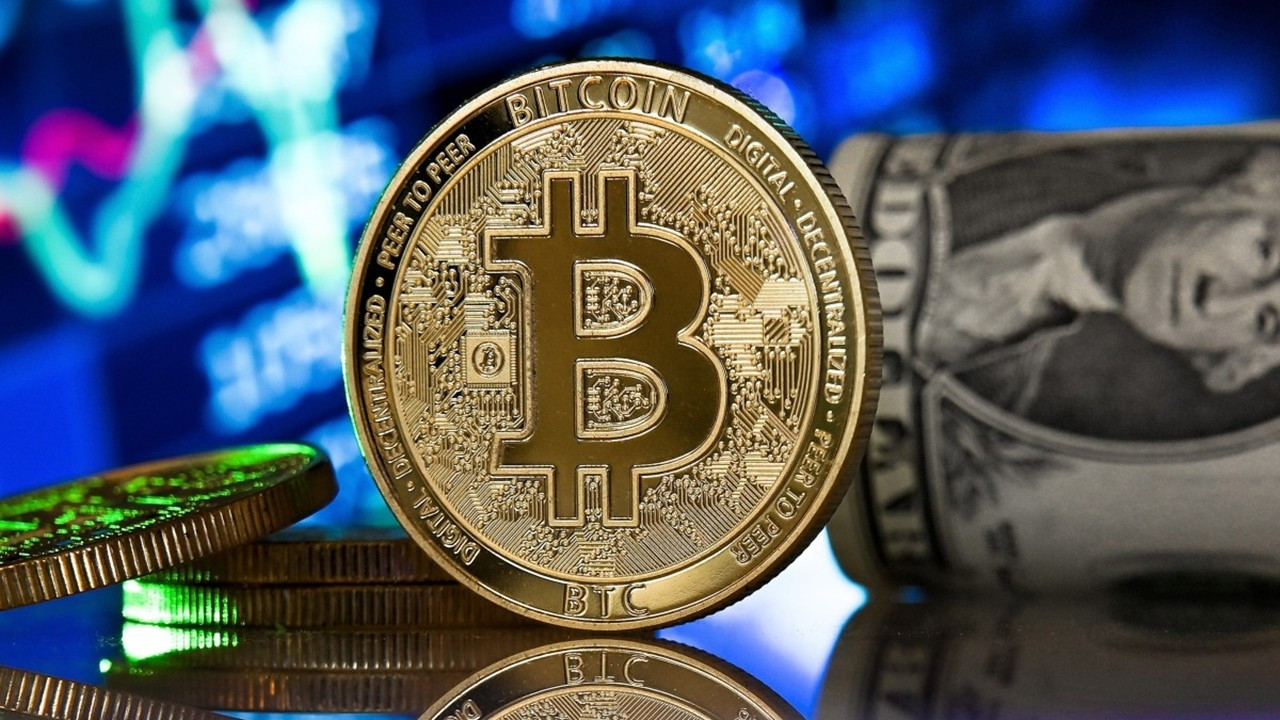
What is Proof-of-Work (PoW)?
Proof-of-Work, which is one of the most basic features of the Bitcoin blockchain network and translated into Turkish as ‘Proof of Work’, is a consensus mechanism. A very important concept for the security of the Bitcoin blockchain network, PoW is an algorithm used on the network for Bitcoin miners to add a new block to the blockchain and confirm transactions.
Proof of work, proof of work, or PoW protocol for short, is a system aimed at preventing abuse of services such as denial-of-service attacks and spam messages. Denial-of-service (denial-of-service) is a cyber-attack with the aim of preventing the use of a machine or network resources by the actual users, temporarily or indefinitely disrupting the host, which is a service provided by powerful servers connected to the Internet.
DoS attacks, which are known to many people by the abbreviated name of denial-of-service, occur when a machine or network servers crashes as a result of overloading it by throwing too many unnecessary process requests. Proof-of-work (PoW) is basically the attack of systems like the aforementioned cyber attacks.
First Time Use of the Term Proof Of Work
The term proof-of-work was first used in the literature by Markus Jakobsson and Ari Juels in a document published in 1999. In 2008, it was encountered again in the whitepaper article written by Satoshi Nakamoto, the founder of the Bitcoin system. Nakamoto PoW
He added the protocol to his own digital currency design, making it one of the trusted cornerstones of Blockchain technology. Before Satoshi Nakmoto, the term proof of work was used to add value to a currency. Shell money used in the Solomon Islands is an example of this.
What is the Consensus Algorithm?
Many cryptocurrencies use PoW as their consensus algorithm. The reconciliation algorithm is a system that offers the possibility of sending or receiving money without a third party. In other words, the consensus algorithm is a system used to secure blockchain technology. You can examine the Hashcash technique to better understand the proof of work system.
What is a Digital Signature?
The digital signature guarantees that the transmitted information is error-free and that the information is transmitted provided that the identity of the sender and receiver is verified. It is also referred to as legal authentication on the web. Let’s take a brief look at Hash Functions and Public Key Cryptography to learn how digital signatures work.
Hash Functions and Public Key
Hash functions are one of the cornerstones of digital signature systems. It is used to prove that transactions taking place on the blockchain network are error-free. The output produced by the hash function is known as the message digest or hash value. The digital signature and the hash code of the digital signature are sent to the recipient.
The receiver transforms the digital signature into a hash in his system and compares it with the incoming hash code. If the hash code is compatible with each other, the operation is performed without error. If it’s not compatible, a new hash is generated so fans can securely authenticate each other when sharing information. With this feature, we can compare hash functions to fingerprints.
Public Key Cryptography (PKC), another element of digital signature, is a cryptography system consisting of a public key and a private key. Each party has a pair of keys and these two key pairs are mathematically linked to each other. While encryption is performed with the public key, decryption is performed with the private key. In systems before PKC, both encryption and decryption were performed with the same key.
With the arrival of PKC, decryption and encryption processes started to be done with different keys.
Use of Digital Signature in Bitcoin and Cryptocurrencies
A Digital Signature is a cryptographic confirmation mechanism that proves that the user has consented to the transaction through a Bitcoin wallet accessed with a private key.

What is Hash Rate?
The ‘hash rate’, which also determines the difficulty level of producing a block on the Bitcoin network, is a measurement system that shows the instant processing power of the Bitcoin network.
What is Verification?
Confirmation is the completion of a Bitcoin transaction on the blockchain network. Each transaction gets a new confirmation by being added to a block and then to other blocks, thus increasing the reliability of the transaction.
Is Bitcoin Valuable?
While Bitcoin has no intrinsic value as a cryptographic algorithm, it is valuable as a medium of exchange that relies on the trust of Bitcoin users and changes according to supply and demand, similar to fiat currencies. However, behind the value of Bitcoin are technical features such as ease of use and security. We said that Bitcoin is a medium of exchange that changes according to supply and demand, so what is this supply and demand? A curve or table showing the quantity of a good that a seller of a good is ready to sell in a market at each price level in a given period of time and assuming other variables are equal.
Demand is a curve or a table that shows the quantities that a consumer is ready to buy from a good at different price levels. In general, we can say that demand is the consumer and supply is the producer. As the price of a good increases, the supply increases, and as the price decreases, the supply decreases, that is, price and supply are directly proportional. Demand and price are inversely proportional, if demand increases, price decreases, if demand decreases, price increases. For example, the price of Bitcoin fell, if five people bought Bitcoin, ten people started to buy it, so the demand increased.
When the demand increased, the price of Bitcoin increased, and when the price increased, if ten people were buying Bitcoin, five people did not buy Bitcoin, so demand fell. Apart from other factors such as being reliable and easy, the value of Bitcoin is also determined by the transaction volume that occurs according to this supply and demand.
What Determines the Value of Bitcoin?
The value of Bitcoin is determined by the transaction volume formed according to the supply and demand of the users.
Is Bitcoin a Ponzi scheme?
Claims that Bitcoin has a ponzi scheme have been constantly voiced since the first day it was developed. However, Bitcoin is a completely different asset from the Ponzi scheme with its technical infrastructure and working model. In the Bitcoin network, everyone is equal and operates under the same conditions depending on the state of the network, and there is no pyramid-shaped earning mechanism.

Does Bitcoin Have An Owner?
Bitcoin has a developer or developers. However, there is no person or institution that owns the Bitcoin network and has a monopoly on approving transactions on the network and controls the network.
Briefly, the working structure of the Bitcoin system
Bitcoin, the first example of crypto currencies, is a decentralized digital currency.
For this reason, it is not managed by any institution, organization or person and no rights can be claimed on it. Since Bitcoins are not managed from any center, they have a distributed network feature from point to point and are decentralized. With this network feature, transactions take place from one point to another (such as from buyer to seller) quickly, without a third party, without intermediaries. The blockchain system, where all transactions are recorded, also works in a distributed manner. Each step of the transaction in the blockchain system creates a block. These blocks come together to form a blockchain.
It is almost impossible to make changes in these blocks, where all information is kept. In the blockchain system, everyone can see the transactions, but the user identities are hidden, this feature provides anonymity and transparency to the blockchain technology.
Who owns the Bitcoin network?
The structures of Bitcoin and the blockchain it works with are decentralized and do not have any owner. Bitcoin has developers. Bitcoin was created by Satoshi Nakamoto, and names such as Laszlo Hanyecz and Hal Finney helped Nakamoto develop Bitcoin. Claims that these names that played a role in the development of Bitcoin were Nakamoto came to the fore, and then these claims disappeared.
Bitcoin network users all over the world can check the transactions made. Bitcoin is a universal digital currency. All of the users can see the transactions made thanks to the blockchain system. Anyone with the internet can do the Bitcoin production process, which we call mining. These features actually make all users in the world administrators of the network.
Who Manages the Bitcoin Network?
The most important feature of the Bitcoin network is that it is decentralized. Blockchain technology, which provides this feature, does not allow any person or institution to manage the network. There are developers and inventors of Bitcoin, but no manager. Therefore, the Bitcoin network is decentralized, meaning it cannot be managed from a single hand. The Bitcoin network is a free and secure technology that is not in the hands of any institution or organization.
Entering our lives as a new digital exchange tool, Bitcoin is revolutionary in terms of the current financial system. Bitcoin is a decentralized digital currency and works with blockchain technology where all Bitcoin transactions are recorded. The reason why Bitcoin is revolutionary in terms of the financial system is due to its decentralized structure and working with blockchain. The lack of managers or owners of Bitcoin, which is a digital currency, is one of the features that makes Bitcoin safe. There are many discourses and theories about Bitcoin, which has become more popular lately.
One of these theories is that Bitcoin is governed by a certain board of directors. These theories and discourses are completely baseless and wrong. Bitcoin was created by individuals or groups named Satoshi Nakamoto, and there are people who helped in the development of Bitcoin. Satoshi Nakamoto continued to develop Bitcoin until 2010 and disappeared without claiming any rights on the Bitcoin network.
The reason why Nakamoto used a pseudonym and left without claiming any rights on the Bitcoin network was because he wanted his invention to get ahead of his name. No one can claim or be the administrator of the Bitcoin network, they can only join the network. Power over the Bitcoin network cannot belong to one person or more than one administrator. Power belongs to all users on the Bitcoin network. If we start from here, we can say that all users are administrators. The Bitcoin network is managed by users all over the world, while Bitcoin has developers but not a single administrator.
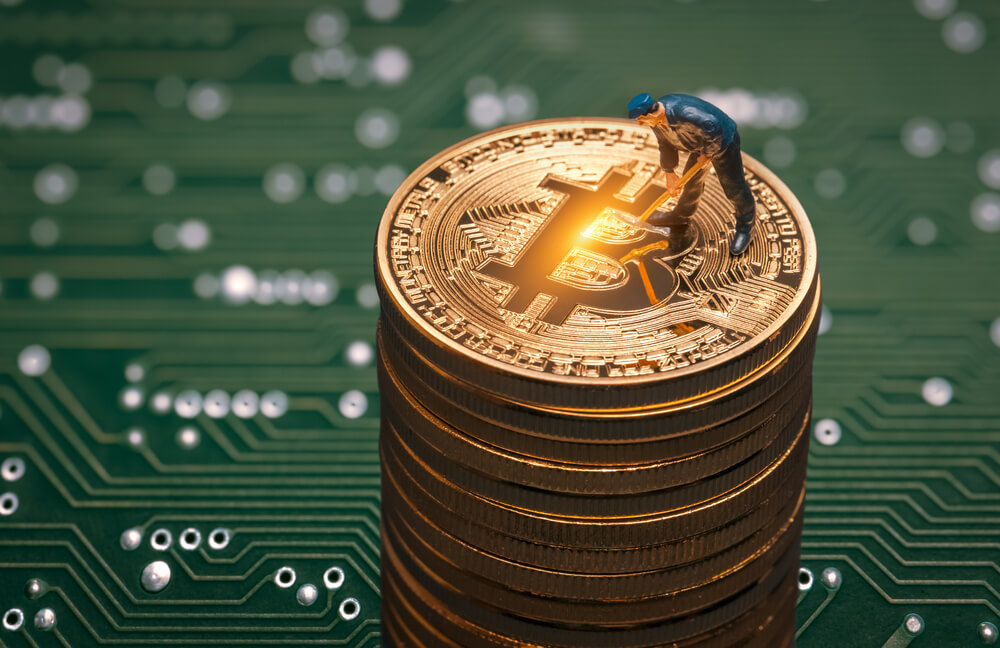
What is a Bitcoin Wallet? What Does It Do?
Bitcoin wallet is basically a digital application used for receiving, sending and storing bitcoins. Numerous applications have been developed to create and use a Bitcoin wallet, with web-based, physical and mobile versions.
Bitcoin wallet in short
A Bitcoin wallet is a software that directly contains the private and public key to use the Bitcoin balance. Thanks to Bitcoin wallets, Bitcoin balances can be viewed and Bitcoin can be transferred to different Bitcoin wallets on the blockchain system. Each Bitcoin wallet has an address that is indicated by different codes. The public key, which allows the wallet to be seen by others and allows people to send Bitcoin to your wallet, is the address of the Bitcoin wallet. You can deposit Bitcoin to the Bitcoin wallet you own with the public key.
To deposit Bitcoin from your own wallet to someone else’s wallet, you need to use a private key. Blockchain technology, where all transactions made with the Bitcoin wallet are recorded, is also used effectively. With a Bitcoin wallet, Bitcoins cannot be converted into physical money, this requires the use of exchanges.
Types of Bitcoin wallets
Wallets are divided into two, depending on whether they are offline or online, as Hot Wallet and Cold Wallet. Hot wallets are wallets that include online (web) wallets, mobile wallets, and desktop wallets. Cold wallets, on the other hand, include hardware wallets and paper wallets. Hot wallets are chosen for reasons such as convenience and low cost, while Cold wallets are chosen for reasons such as higher reliability.
You can use any wallet you want. Each wallet has its own advantages and disadvantages. When choosing a wallet, you should compare the pros and cons and choose the wallet that suits you best. To increase the security of Bitcoin wallets, wallets can be backed up regularly and strong passwords can be created on the backed up wallet. Double security confirmation can be used for online Bitcoin purchases.

How to Create a Bitcoin Wallet?
You can download the Bitcoin wallet application from https://bit.ly/2B7jDz6 and install your wallet on your computer or phone. However, to get rid of the requirements such as synchronization with the Bitcoin blockchain network and the required storage space for the wallet, you can download many mobile and web-based third-party wallet applications or open an account on a cryptocurrency exchange to get a Bitcoin wallet. However, only a private key that you individually own will give you complete control over the Bitcoin wallet.
What is a Public Key?
The public key is the key that belongs to a created Bitcoin wallet and is shared between users for sending and receiving Bitcoins.
What is a Closed Key?
The private key is the key belonging to a created Bitcoin wallet that is used to access the wallet and confirm bitcoin transactions, and should be known only to authorized persons.
What is the Sync Process?
When you download a Bitcoin wallet and install it on your computer, the process of confirming and downloading all transactions on the Bitcoin network is called the synchronization process.
How Long Does the Sync Process Take?
Like the Bitcoin Core application, the synchronization time required for full node clients is not a standard one, but takes a long time and can take several days. Synchronization time is closely related to internet speed. A fast internet connection shortens the synchronization time.
How is Bitcoin Produced?
Bitcoin is produced as a result of a reward given by the network to Bitcoin miners as a result of a process called mining. In the simplest definition, Bitcoin production is done through Bitcoin mining. Bitcoin mining is a structure that provides financial transfers, confirms financial transactions and produces new Bitcoins. This structure works thanks to blockchain technology, where all transactions are recorded.
As the most used method to do bitcoin mining, it is necessary to have ASIC miner (Application Specific Integrated Circuit; Application Specific Integrated Circuit). With this device, you can connect to the USB port of the computer and you can mine Bitcoin from your own computer at home, but it should not be forgotten that this process is very costly and in order to be able to mine, it is necessary to have information about the crypto currency exchange and to be followed up-to-date.
Bitcoin mining works with blockchain technology, it is not connected to any central system, so transactions are controlled by many people, and therefore it is safe. As the prices of digital currencies such as Cash, Litecoin and Ethereum increase, the number of people who mine digital money is increasing day by day.
What is Bitcoin Mining?
Bitcoin mining is the computing power process used to solve mathematical problems through computers used by miners to confirm each transaction and add transactions to the main blockchain to ensure the security of transactions performed on the Bitcoin blockchain network.
Bitcoin mining works with blockchain technology. The transactions made in blockchain technology are recorded in blocks, and the process of producing Bitcoin takes place with the numerical problems that bitcoin miners try to solve instantly.
We can compare Bitcoin production to gold miners, the more excavations are made, that is, the more profits are made. Bitcoin transfers are added to the blockchain and processed by miners after receiving the user’s consent. The miner receives bitcoin as a reward at the end of this transaction. As the number of transactions made in Bitcoin increases day by day, the block lengths are also quite high. As the maximum number of Bitcoins is approached, the amount of reward Bitcoin distributed per block decreases over time.
Is Bitcoin Mining Safe?
Bitcoin mining is secure as it works with blockchain technology. Thanks to its decentralized structure, a single person cannot decide whether a transaction is approved and processed on the blockchain, a transaction block is processed or not processed by the joint decisions of miners or by majority vote. So, can Bitcoin miners generate unlimited Bitcoins? No, it cannot. The system makes it difficult for miners to decipher the password every time. Thus, a limited number of Bitcoins are produced since the processing power will be insufficient each time. The fastest decrypting miner can get Bitcoin.
When Was The First Bitcoin Mining Made?
The first Bitcoin mining was done on January 3, 2009 by Satoshi Nakamoto. Bitcoin mining is a structure that provides financial transfers, confirms financial transactions and produces new Bitcoins. With the creation of the genesis block, the first block in the Bitcoin blockchain, by Nakamoto, the first Bitcoin mining was also realized. The Genesis block was created on January 3, 2009, and the 50 Bitcoin reward of this first block is located at an address belonging to Satoshi Nakamoto.
Nakamoto’s Interesting Message
To prove that the genesis block was created on January 3, 2009, Nakamoto placed one of the headlines of The Times newspaper of that date in the genesis block. The caption read “Chancellor on brink of second bailout for banks”.
It can be said that one of the reasons why Satoshi Nakamoto chose this title in particular was that central banks challenged the endless expansion policies after the global economic crisis that emerged in 2008. The emergence of Bitcoin in the 2008 crisis and the message Nakamoto placed in the first block he created could not have been a coincidence.
Who Made the First Bitcoin Mining?
The first Bitcoin mining transaction was made by Bitcoin developer Satoshi Nakamoto. Bitcoin, any central bank, government agency, etc. Bitcoin mining is the process of producing new Bitcoin by processing the records of transactions with Bitcoin into the blockchain.
After Nakamoto published the Bitcoin whitepaper on October 31, 2008, he created the first Bitcoin block, genesis, on January 3, 2009. Genesis, also called the zero block or initial block, is the first example of cryptocurrency mining in history. The 50 Bitcoin prize of the Bitcoin starting block is located at an address belonging to Satoshi Nakamoto. Nakamoto has created this 50 Bitcoin prize as non-spendable.
At the time Nakamoto created the genesis block, the difficulty of the Bitcoin network was worth “1”. Block difficulty is a measure of how difficult it is for a miner to find the nonce value (Number Only Used Once) that allows adding a block to the blockchain. The difficulty of the Bitcoin network is currently 16,947,802,333,946.61.
What is the Name of the First Bitcoin Block Produced?
The name of the first Bitcoin block produced is Genesis Block.
How Many Bitcoins Was The First Block Produced?
The first Bitcoin block produced was rewarded with 50 Bitcoins by the network.
How Is Bitcoin Mining Done?
For each block produced on the Bitcoin blockchain network, there is a difficulty degree determined by the network that is the same for everyone. The difficulty is the processing power of computers to solve an algorithm to produce a new block. The difficulty level increases or decreases according to the structure of the blockchain network, the number of miners involved, the processing power and the transaction density.
Today, it is very difficult to mine Bitcoin with the processing power of personal computers. For this reason, special hardware with high processing power is sold. After the necessary hardware is provided, Bitcoin mining can be done by downloading a mining software.

What is Bitcoin Transaction?
A Bitcoin transaction is a Bitcoin transfer transaction between public keys and signed with a private key through Bitcoin wallets accessed with private keys on the Bitcoin blockchain network.
How Much is Bitcoin Transaction Fee?
A transaction fee is charged by the network for each transaction that is confirmed by miners and added to the network and completed on the Bitcoin blockchain network. In order to shorten the confirmation time of a transaction, the transaction fee can also be determined by the user before the transaction is executed. The higher the transaction fee, the shorter the confirmation time of the transaction. As of October 14, 2019, when this article was written, Bitcoin transaction fees range from 0.25 USD to 0.50 USD.
How many Bitcoins are there in total in the market?
According to coinmarketcap.com data, as of October 14, 2019, the number of Bitcoins in circulation is 17,991,750. With Bitcoin mining activities, this number is increasing day by day. You can follow the current figure on coinmarketcap.com.
Can Bitcoin be multiplied indefinitely?
One of the most important features of Bitcoin is that its supply is limited to 21,000,000. The limited supply of Bitcoin means that new Bitcoins cannot be produced through individuals and institutions such as the central bank, such as government-supported exchange rates, which are circulating in the market and can be printed and reproduced on demand through central banks. This situation protects Bitcoin users against risks such as devaluation by speculative movements by third parties.
How Can I Buy Bitcoin?
There are basically three different ways to get Bitcoin. First, you can get Bitcoin for money or for free from a friend who owns Bitcoin. You can get Bitcoin by mining Bitcoin. You can buy Bitcoin from an exchange or a third party organization. So you can buy Bitcoin from a friend, from an exchange or from a Bitcoin seller by opening an account and getting your account verified.
What is Altcoin?
The concept of “Altcoin”, which is a concept derived from “Alternatives to Bitcoin” (Alternatives to Bitcoin), is a general concept used for cryptocurrencies other than Bitcoin. Cryptocurrency is a term that covers Bitcoin and all Altcoins. The most well-known cryptocurrency is Bitcoin. Examples of Ethereum, Ripple, Litecoin, Monero, and Neo Altcoins. There are more than 1000 types of Altcoins.
In its simplest definition, Altcoin is the name given to alternative cryptocurrencies after Bitcoin. Altcoins try to present themselves as a better alternative to Bitcoin. Altcoins vary according to the consensus algorithm they use. Consensus algorithms are an algorithm based on individuals in the group to make the most beneficial decision and support the best decision by complying with the multiplicity, whether everyone in the group likes or not.
Let’s have an overview of the similar features of Bitcoin and other Altcoins. Namecoin, which is the first Altcoin, took advantage of Bitcoin’s open source codes and used the proof of work (PoW) algorithm. Proof of work algorithm, with the simplest definition, is an algorithm used for cyber security. That’s why Namecoin was developed based on Bitcoin.
Like Bitcoin, Namecoin is capped at 21 million circulations. When it comes to Ethereum, another Altcoin, we see the first smart contracts. Smart contracts are a digital computer protocol that allows users to transact without a third party. For this reason, Ethereum is defined as the second generation Blockchain. Litecoin (LTC), another cryptocurrency that came out after Bitcoin, uses the PoW algorithm like Bitcoin. Unlike Bitcoin, the number of Bitcoins in circulation is limited to 84 million.
In Litecoin, a block is formed in an average of 2 minutes, while in Bitcoin this time is 10 minutes.
Although there are thousands of Altcoin types in the market, we cannot say that all Altcoins contribute to the ecosystem. Because not every Altcoin acts to contribute to the ecosystem or to carry a certain value. when crypto collapse, when crypto collapse, crypto bubble bursts, Or crypto rally,up or down movements, technical and fundamental analysis,chart movements,Bitcoin comments, Bitcoin TL , Bitcoin how much, Bitcoin dollar, Bitcoin what, Bitcoin comments , How much is Bitcoin today, How to buy Bitcoin, Bitcoin analysis, Bitcoin live, how to buy Bitcoin, Bitcoin predictions, what will be Bitcoin, what happens to Bitcoin, when Bitcoin rises, Tags: crypto money, what is bnb, what is bnb coin analysis, what is bitcoin ,btc analysis,btc latest status,btc comment,eth comment,eth analysis,crypto expert,zen coin,zen coin comment,zen coin chart,zen coin analysis,zen,zen coin,zen analysis,zen chart, zen comment, Altcoin, Cryptocurrency, Bitcoin, Current analysis, Current situation, Latest situation, Technical analysis, formation, will it rise or fall?, Current support resistance points, Current graph, what is bitcoin in my videos here, how to buy bitcoin, bitcoin and altcoin comments, technical analytics stock , altcoins bitcoin and altcoin buy and sell tactics, how to make money from cryptocurrencies, altcoin dailys which altcoin will rise, altcoin that will rise the most, when will the rise in altcoins begin, bitcoin analysis altcoin analysis, will bitcoin fall or rise, altcoins will rise, bitcoin technical analysis, altcoin technical analysis, will xrp drop, xrp rise, when altcoin rally, bitcoin monetization, altcoin monetization, how to buy bitcoin, how to sell bitcoin, how to sell altcoin, which exchange to buy bitcoin and altcoin xrp xlm ripple ,steller ,etherium, chainlink , eos ,dash ,bch ,Prices and Latest Developments HOW MUCH RISE? DID IT FALL? Bitcoin – BTC, Ethereum – ETH, Binance Coin – BNB, Chiliz – CHZ, Cardano – ADA, Ripple – XRP, TVK, BAKE, GRT, +Bitcoin+Crypto+Economy+Btc+altcoin+Blockchain+ethereum+ripple+BTC+ ETH+LTC+XRP+NEO+EOS+Link+atom+xtz+trx+tron+altcoin+why should I buy bitcoin+My Crypto World+What is Bitcoin+Bitcoin review+Cryptocurrency+Digital currency+Bitcoin analysis+cryptocurrency+world analysis+ bull rally+altcoin bull+what is crypto+cryptocurrency+cryptocurrency exchange+cryptocurrency bitcoin+cryptocurrency chart+what is bitcoin+bitcoin mining- #bitcoin #etherium #ont ,#qtum,#reef #island, #investment# ,economy ,#altcoin ,#altcoin bull #ripple ,#xrp, #cryptocurrency #stock market SUPER, ALICE, FLOW, BTCST, NEO, 1INCH, BTT, WIN, TRX, HOT and altcoins! Which Crypto Coins Do I Follow? ,Bitcoin analysis – Bitcoin technical analysis – altcoin analysis – btc – what is it – buy sell – will it rise? will it fall? win – buy – how to buy – purchase – price – comment – comment what’s the latest status? What will happen now? What are btc comments support and resistances? Has btc bear season started? bull season continues? crypto – bitcoin, cryptocurrency 2021, crypto, crypto, cryptocurrencies, crypto crash, crypto crash, crypto crash, crypto crash, bitcoin crash, crypto Bitcoin BTC , Altcoin and Cryptocurrencies
How Can I Buy Altcoins?
You can buy Altcoins from a friend, an exchange that lists the Altcoin you are considering buying, or a third-party organization that sells the Altcoin you are considering buying.
How Can I Store My Bitcoins?
There are multiple ways to store your Bitcoins. First of all, you can store your Bitcoins through a Bitcoin wallet that you have a private key. You can choose from among many web, mobile and hardware-based wallet applications. However, by opening an account with an exchange, you can store your Bitcoins through a Bitcoin account created by the exchange and whose private key is controlled by the exchange.
What is a Hot Wallet?
Hot wallet is a concept used to express wallet applications that are connected to the internet in its most basic sense. Funds are held in an internet-connected wallet application or in the database and server of a third-party wallet provider. The most important security risk related to hot wallets is hacking of databases and servers connected to the internet, where wallet information is kept, by cyber attackers.
Relationship between hot wallet and Bitcoin wallet
The term hot wallet is directly related to the Bitcoin wallet. A Bitcoin wallet is a software that contains private and public keys that allow the user to use the Bitcoins they have. Bitcoin wallets allow you to see the balance and perform transfers to other wallets. The public key in Bitcoin wallets is the address of the Bitcoin wallet and allows your account to be viewed by anyone.
With the private key, Bitcoin is sent from one Bitcoin wallet to another Bitcoin wallet. Bitcoin wallets allow you to see the balance and perform transfers to other wallets. With Bitcoin wallets, Bitcoin cannot be physically converted into money (TL, Euro, etc.). Bitcoin wallets are divided into hot wallets and cold wallets. Which wallet should be preferred should be determined by the users by comparing the advantages and disadvantages.
hot wallet
A hot wallet is the name given to online cryptocurrency wallets. These wallets were created specifically for their mobile devices. You can make payments and transfer transactions on the go with a hot wallet. This wallet uses a very small portion of the Blockchain to take up little space.
Although hot wallets are preferred due to their ease of use and speed, they are weak in terms of security, so it is recommended to work in harmony with a cold wallet. Additional security measures can be taken due to low security in hot wallets. Online purchases with hot wallets may require double verification.
If you are having trouble choosing a wallet, which is a cold wallet or a hot wallet safer? You can visit our article.
What is Cold Wallet?
Cold wallet is a concept used to express wallet applications that are not connected to the internet. In cold wallet applications, wallet information is stored in internet-connected environments in order to be protected from cyber attackers. The most important known cold wallet applications are hardware wallets. Cold wallets are accessed with the account key of the wallet owner. People who do not have the account key cannot make any transactions in the wallet, so it is safe.
Types of Cold Wallets
In cold wallets without internet connection, the probability of theft is almost zero. For this reason, people who do not regularly buy/sell cryptocurrencies generally prefer cold wallets instead of hot wallets because they are more secure. Access to cold wallets is provided only with the account key given to each wallet owner.
For this reason, the user should not share the account key number with anyone, otherwise people other than the wallet owner can access their crypto money balances. Cold wallets are divided into two as paper and hardware wallets. Paper wallets are created through online sites. The created wallet can be used by downloading it to the computer.
Hardware wallets are the most preferred type of cold wallets. Cryptocurrencies in these wallets, also known as hardware, are kept in the wallet independently of the internet. With these cryptocurrencies, which are kept independently from the Internet, no transactions can be made unless the wallet owner wants it. For this reason, hardware wallets are known as the most secure wallets.
How to Use Hardware Wallet?
Those who want to use hardware wallets need to buy hardware wallets from brands such as Ledger, Nano and Trezor. Hardware wallet establishment can be carried out according to the usage instructions of that brand, which brand wallet will be used. After the installation is completed, the incoming account key must be saved, otherwise it is not possible to access the account with cryptocurrencies.
What is a Web Wallet?
Web wallet is a concept used to express internet-based wallet applications.
What is a Hardware Wallet?
A hardware wallet is a physical cryptocurrency wallet. An additional protection against hackers is provided, as the buttons on the wallet must be pressed to perform a transaction through hardware wallets, which are not connected to the Internet, which fall into the cold wallet category. The most used hardware wallet applications in the market are hardware wallets developed by Ledger and Trezor companies.
Is Cold Wallet or Hot Wallet Safer?
Cold wallet and hot wallet applications have their own advantages and disadvantages. While hot wallets are more convenient for instant transactions as they are easier and faster to use, cold wallets are more difficult to use and are not suitable for instant transactions.
However, cold wallets have additional security protocols compared to hot wallets and are more secure against cyber attackers since they are not connected to the internet and a transaction must be physically confirmed. Although cold wallets become vulnerable when plugged into devices connected to the internet, they still maintain their feature of being more secure than hot wallets in general.
What is Lightning Network?
Lightning Network is a technology that has been proposed as a solution to the problem that the increase in the number of transactions renders the network inoperable, which is described as scaling, as a result of keeping the block size low for security reasons while developing the Blockchain network.
Who Invented and Developed the Lightning Network?
The first studies on the Lightning Network were started in 2015 by Joseph Poon and Thaddeus Dryja. Lightning whitepaper was published by Poon & Dryja in 2016. Elizabeth Stark, CEO of ‘Lightning Labs’, which is working on the development of the Lightning Network, announced on March 15, 2018 that they have released the 0.4 beta version of the Lightning technology they developed, ‘lnd’ (Lightning Network Daemon).
How Does the Lightning Network Work?
Lightning Network technology, similar to a side chain application, but with important differences, works with the principle that transactions are carried out before they are announced to the network through payment channels created between users in order to eliminate the troubles caused by the confirmation time of transactions in the blockchain network and to make micro Bitcoin transactions functional. .
Why Lightning Network Matters
Lightning Network technology provides a solution to the slow operation and loss of function of the network due to the scaling problem, which stands out as one of the important problems of blockchain-based cryptocurrencies, as a result of cryptocurrencies becoming a payment standard and being used by large masses. Therefore, Lightning technology is a very important technology for the widespread adoption of cryptocurrencies by individual and institutional investors.
What is the Scaling Problem?
The scaling problem is the problem of slowing down transactions on the network and rendering the network dysfunctional as a result of insufficient block size determined during network development, depending on the transaction density of a blockchain network.
What is a Smart Contract?
Described as a revolutionary technology that will transform many internet-based applications, smart contract technology allows any contractual relationship between people to be coded on the blockchain network and developed in a self-working, secure and peer-to-peer structure. Smart contract technology, which is still in the testing phase in many fields such as economy, transportation, law, land registry, notary public, communication, is a technology that is a candidate to become a standard in terms of many public and sectoral services.
Who Invented Smart Contract Technology?
Smart contracts were first introduced in 1993 by Nick Szabo, a law professor at George Washington University, a computer scientist and cryptologist who also studies digital currencies. Nick Szabo also developed a decentralized digital currency very similar to Bitcoin, which he named ‘Bitgold’ in 1998, years before Bitcoin.
How Smart Contracts Work
Smart contracts that work with the if-then principle (if it is like this) work by coding the terms of any contract between individuals on the blockchain. To explain with an example: Ahmet has a car and will sell it to Ali. Ali will buy the car in eight installments and when all installments are paid, the license will be given to Ahmet. When this transaction is coded as a smart contract in the blockchain network, the network will automatically send the license to Ali when Ali pays the eighth installment. In this example, we assume that the payment method and license database are on the blockchain network. All audits will be done by the network and the terms of the contract cannot be changed. Thus, possible fraud attempts will be prevented from the very beginning. Much more complex smart contract models can be developed in different areas on the blockchain.
Is Bitcoin Legal?
As Bitcoin is a fairly new and unique financial asset, it is still regulated by very few countries. Many governments do not recognize Bitcoin as either a legal or illegal asset. Although a small number of countries prefer to ban Bitcoin, the number of countries that legally regulate Bitcoin is increasing day by day due to the increase in the number of users of Bitcoin.
Is Bitcoin Safe?
One of the most important features of Bitcoin is that it is a very secure payment tool. Blockchain technology, on which Bitcoin is built, offers a much safer transaction ecosystem against cyber attackers than traditional payment methods. Transactions carried out in the blockchain network are added to the network in an irreversible and unchangeable way with encryption algorithms. Each transaction is announced to all computers in the network and problems such as spending the money that is not owned are prevented.
Why Is Bitcoin Safe?
Bitcoin is a digital currency that works with blockchain technology. Blockchain technology is a system where all transactions are recorded and consists of blocks. For example, you will perform a Bitcoin transfer transaction, each step of the transaction creates blocks, such as the name of the sender and the name of the receiver. When the process is finished, the blocks are encrypted and these passwords cannot be cracked. It is not possible to modify a block because the blocks are linked.
It is necessary to make changes in the blocks before the block to be changed, which means making changes in the whole chain. In such a case, mismatch occurs in the blocks and is immediately noticed.
Therefore, it is not possible to modify or theft Bitcoin transactions. Blockchain technology is transparent, anyone who wants can see the transactions in the accumulated blocks, but the user identity is hidden and shown with numbers. Thanks to this feature, privacy is also ensured while users follow the transactions.
Transparency also allows users around the world to avoid problems that may occur in the Bitcoin network, such as attempted theft.
Bitcoin is a decentralized digital currency. It is not managed by any institution, organization or person. Therefore, no rights are claimed and users’ Bitcoins cannot be seized or billed. The fact that Bitcoin works with blockchain technology and has a decentralized structure are the features that make Bitcoin secure.
Are Bitcoin Transactions Private?
No special knowledge is required to open a Bitcoin account. At the same time, IP information is not kept by the network when opening the account. No relationship can be established between the transactions performed and real persons, except by opening a Bitcoin account on an exchange and making transactions. In this respect, Bitcoin is a very safe payment tool.
Are Bitcoin Transactions Public?
Bitcoin transactions are open to everyone. Transactions performed on the network can be tracked instantly, and data such as how much Bitcoin is in which Bitcoin account can be followed statistically over public keys.
Why Are Bitcoin Prices Fluctuating?
As Bitcoin is still a fairly new financial asset, it has few users. The fact that medium and large-scale investors who invest in Bitcoin while the value of Bitcoin is still at very low levels and have a large number of Bitcoins and are already investing in Bitcoin have a significant share in a market that can be considered small yet. makes it open to action. All these problems will be minimized as a result of the increase in the trust in Bitcoin and the wide adoption and use of Bitcoin.
Can I Receive and Send Bitcoin Without an Internet Connection?
Since Bitcoin’s blockchain network is active on the internet network, it is not possible to send and receive Bitcoins without an internet connection. However, there are different studies on receiving and sending Bitcoin offline. These transactions basically work with the logic of announcing a transaction instruction given on a device (wallet) while offline, to the network when the device is online. In addition, there are studies such as developing technologies that communicate with radio waves with the blockchain network.
Is Bitcoin Deflationary?
Deflation is a situation in which the general level of prices in a market falls steadily. To make sense of this situation, theories such as the ‘deflationary spiral theory’ have been developed. Although Bitcoin sometimes displays a deflationary appearance, it was not designed as a deflationary currency due to its structure. Bitcoin is not a deflationary asset.
Is Bitcoin Inflationary?
Inflation is a concept used to express the process of decreasing the value of money while the prices of goods and services increase as a result of the proportional difference between the amount of money supply and the goods and services to be purchased in a market. Based on the debates on whether inflation is more about the supply of money or the increase in the prices of goods and services
, different evaluations are made about whether Bitcoin is inflationary or not. Bitcoin is not an inflationary asset in the classical sense.
What is a Node in Blockchain?
A node is any internet-connected device that keeps a copy of the transactions that take place on a blockchain network. Nodes are very important elements for the integrity and functionality of a blockchain network.
What is a Full Node in Blockchain?
A full node is the node that contains a copy of all transactions that occur in a blockchain network. Nodes that keep track of Bitcoin transactions since 2009 are full nodes.
What is a Partial Node in Blockchain?
A partial node is a node in a blockchain network that contains a copy of transactions that take place over a period of time. The node that holds a copy of Bitcoin’s transactions made in September 2019 is a partial node.
What is Fiat Currency?
It is the name given to the metal and paper money issued by the states to be used as a legal payment instrument within the country. Such coins are used not with their physical value, but with the value written on them. Fiat coins are used in the exchange of goods and services, and they also carry a signature on them, and it is a crime to imitate this signature. The concept we call fiat money is actually banknotes that we all know, and this is how the money in circulation today is.
Advantages and Disadvantages
Fiat money has advantages such as providing flexibility and storing value for institutions such as the state and central banks in times of economic crisis. Supply is the sale of a good in a certain market and at a certain price. Since the fiat system is not as stable and scarce as gold, banks have more control over the supply of fiat money. Therefore, it has the power to manage economic variables.
Everyone thought that if the economy was bad, more money could not be printed. Uncontrolled printing of fiat money causes negative effects such as hyperinflation by depreciating money. For example, in cases where money becomes worthless, one has to carry a lot of money with him to buy a small pin. Financial bubbles can occur with the overvaluation of financial products as the fiat currency provides unlimited supply.
Initial Formation Process
The formation process of fiat money started as follows; In the 17th century, in England, goldsmiths handed over valuable items such as gold to the mint, an official institution in London, where money was minted on behalf of the country, in order to protect them from loss or theft. When the gold of the merchants in London was seized by the King of England Charles I in 1640, the confidence of the merchants in the state was shaken.
Upon this shaking of confidence, goldsmiths, who were jewelers, hid the gold by making safes and gave them bearer papers called goldsmiths notes (goldsmith paper). Along with these banknotes, the first banknote system has emerged.
THE INFORMATION COMMENTS AND RECOMMENDATIONS CONTAINED HERE ARE NOT INVESTMENT CONSULTANCY. THIS BLOG POST IS WRITTEN FOR INFORMATIONAL PURPOSES ONLY. IT IS NOT INVESTMENT ADVICE IN ANY WAY..








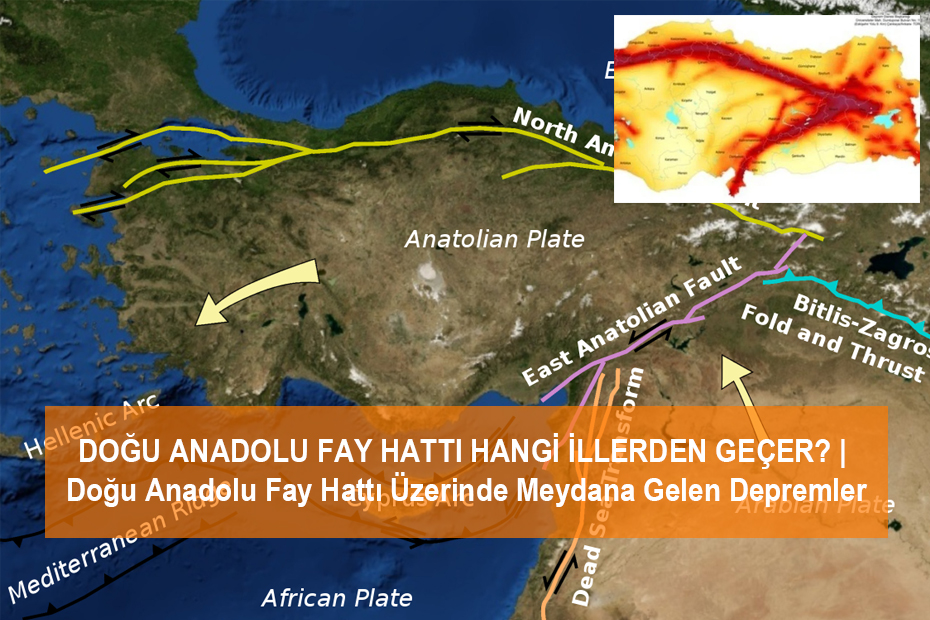
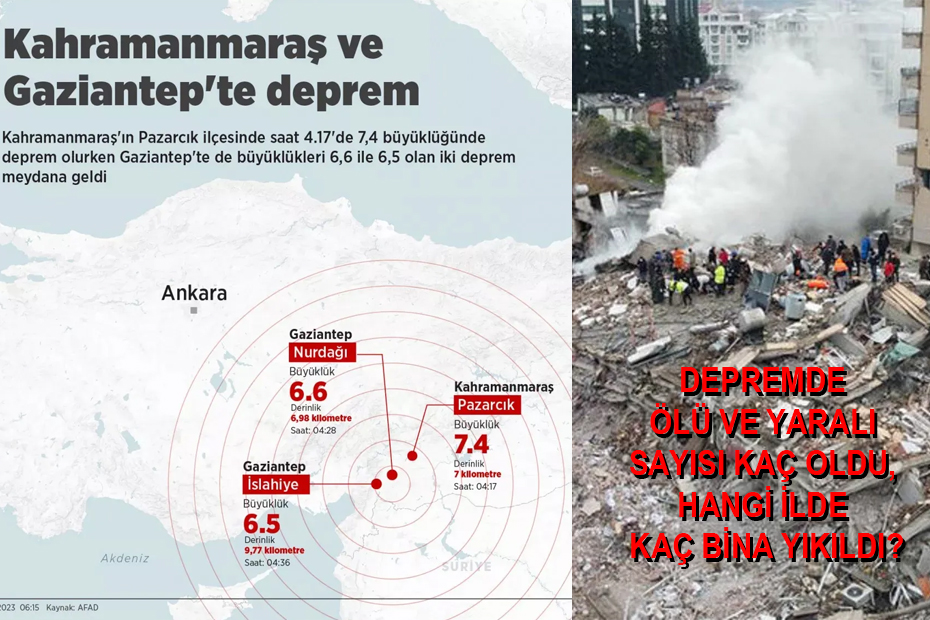




Comments